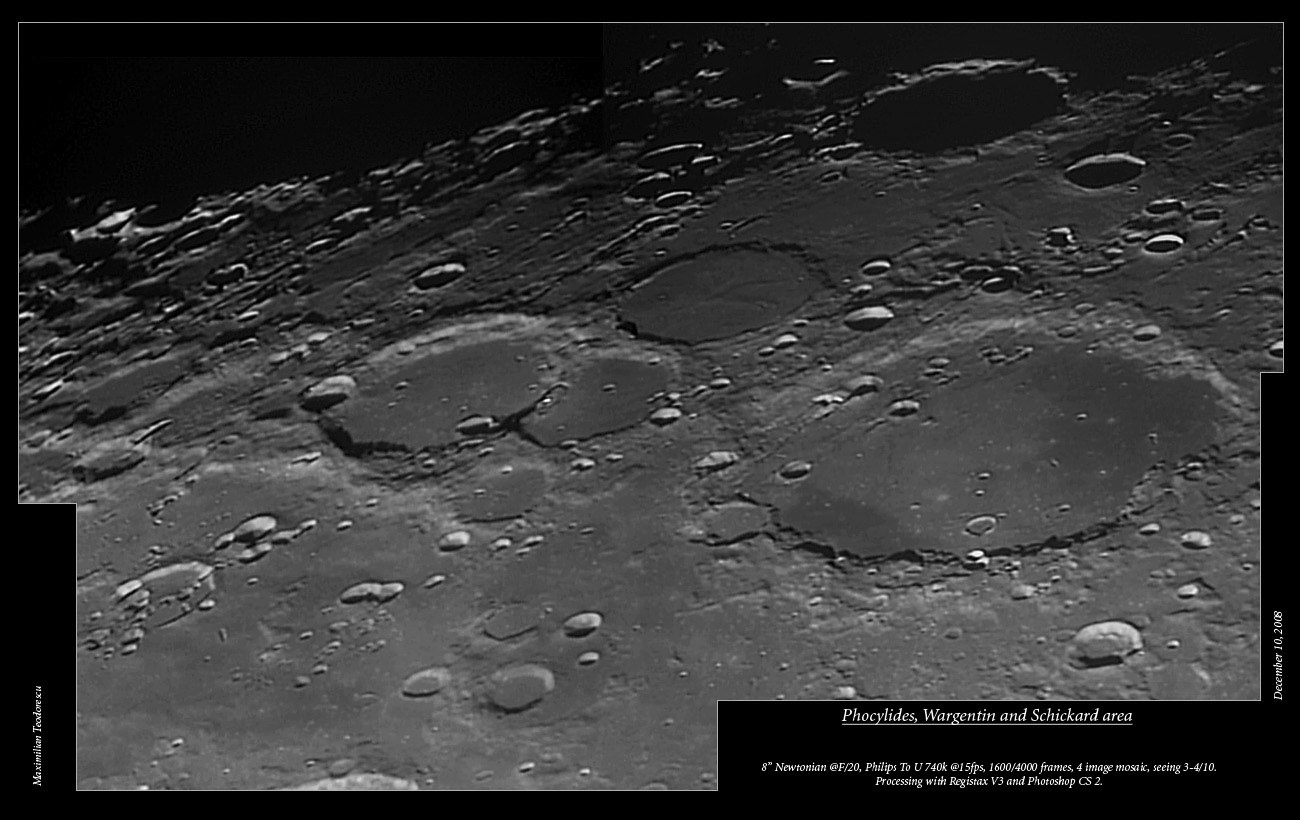April 29, 2018
Levels
Originally published December 22, 2008

image by Max Teodorescu -- Dumitarana, Romania
Smooth crater floors result from infill by fluid materials. Mare lavas make many crater floors dark - think Plato - but many other smooth floors are light, unlike
maria. Schickard is an example, with a bright zebra stripe separating mare lavas at either end. But high Sun views reveal dark halo craters on the bright stripe,
indicating that mare basalts are buried under the brightness. The nearby crater Wargentin also has two dark halo craters so there is mare basalt under its lavas
too. Phocylides and Nasmyth - the sole and heel crater pair left of Schickard - are bright floored but lack dark halo craters. This could mean there are mare
lavas but they are buried too deeply under the bright material to be excavated by later cratering. Or there are no mare lavas on their buried floors. The bright
smooth material is probably fluidized ejecta from the formation of the Orientale Basin. Schickard and Wargentin got a dusting, but apparently Phocylides and
Nasmyth received a lot more. What is fascinating is the differing levels of the floors on these craters. As everyone knows (you do, don't you?) Wargentin is so
full of fill that it overflowed on its west side. Looking at Max's image shows that Nasymth's floor is not as high, and Phocylides' seems to be even lower. I accept
that Orientale's ejecta contributed to infilling each of these craters but I am surprised that the amount seems so variable. Perhaps the difference between floor
levels of the Sole and Heel can be explained because Nasymth is a smaller diameter crater and thus was not as deep as Phocylides originally. If exactly the same
thickness of ejecta fell in both, Nasymth's floor would be higher because it wasn't so deep. But then Wargentin's floor is remarkably full. The answer there, I
think, is that it was mostly filled by lava, and only topped off with ejecta. Does that make sense?
Chuck Wood
Technical Details
December 10, 2008; 21:20-22:00 UT. Observing location: 44° 19' North, 25° 59'East, elevation 69 meters. See image margins for additional information.
Related Links
Rükl plates 62 and 70
Yesterday's LPOD: Humans First Leave Earth
Tomorrow's LPOD: Cuarto Creciente
COMMENTS?
Register, Log in, and join in the comments.



